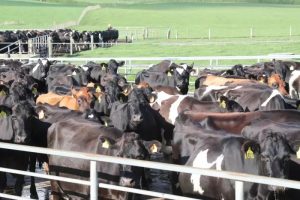
Twenty years of monitoring dairy farms in five catchments across New Zealand has revealed significant improvements in water quality.
As part of an Our Land and Water study to analyse historical data, DairyNZ’s water quality science team, in collaboration with AgResearch and Lincoln University, revisited dairy farms in the Waiokura (South Taranaki), Toenepi (Waikato), Waikakahi (Canterbury), Bog Burn (Southland) and Inchbonnie (West Coast) catchments to assess whether on-farm actions have helped improve water quality over time.
The five catchments are dairy farming areas that were part of the 2001-2010 Best Practice Dairy Catchments project that monitored water quality and environmental work on farm.
Monitoring of water quality and changes to farm practices continued from 2011-2020, as part of national long-term data collection.
Researchers found that, over the 20-year monitoring period, including post-extension, 70% of in-stream water quality trend directions were improving or showed no change.
The median levels of most contaminants in water have also decreased, due to farmers implementing good management practices (GMPs) such as improved effluent management and stock exclusion.
The study found in-stream concentrations of phosphorus and suspended sediment decreased the most in response to on-farm work.
Overall, the research showed the implementation of GMPs on farm does improve water quality.
The analysis shows the good outcomes achieved by improving management practices on dairy farms, DairyNZ general manager sustainable dairy Dr David Burger said.
“The mitigation options dairy farmers can take to reduce footprint are widely known, but analysis of the positive impacts of these over time is less available.
“So it’s good to see this dataset showing extension efforts to help farmers improve their management practices have led to water quality improvement.”
Research lead and Our Land and Water National Science Challenge chief scientist Professor Rich McDowell said the findings are positive but also show continued action is needed in key catchments to maintain the momentum.
“The data shows that, over the 20-year period, many trends were improving or showed no change. However, we know nitrogen levels increased in many catchments due to development on other dairy farms over the same period.
“This means there is still more to do in some areas to lower nitrogen and E coli concentrations. In some catchments, more than good management practice may be required, such as land-use change, to meet water quality expectations,” he said.
This article first appeared in our sister publication, Dairy Farmer.
You can now read the most important #news on #eDairyNews #Whatsapp channels!!!
🇺🇸 eDairy News INGLÊS: https://whatsapp.com/channel/0029VaKsjzGDTkJyIN6hcP1K
























